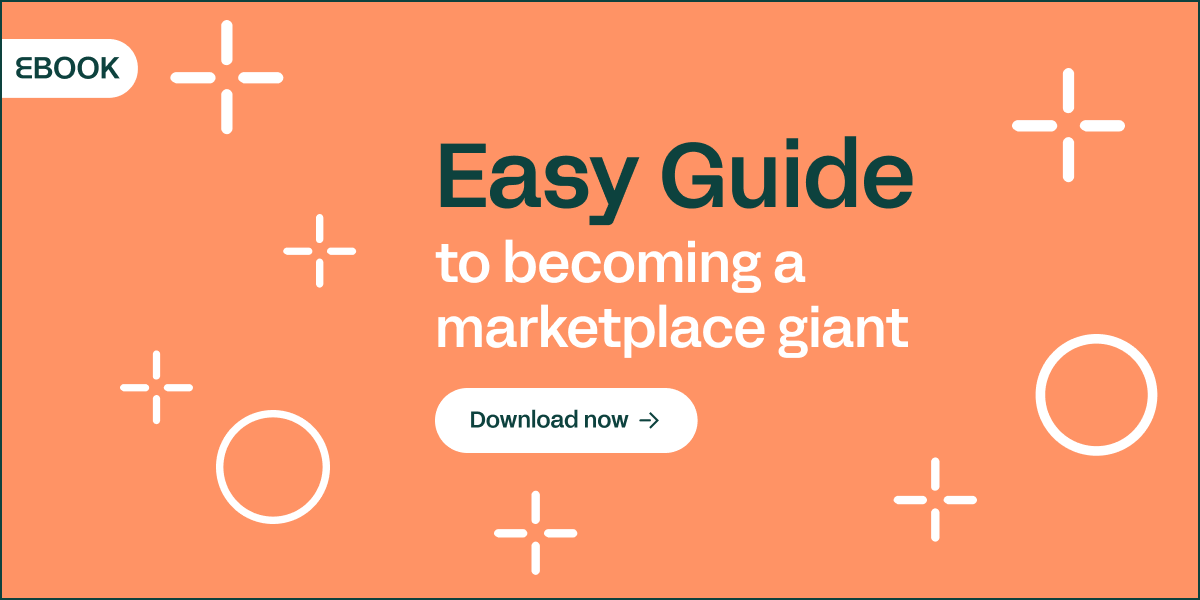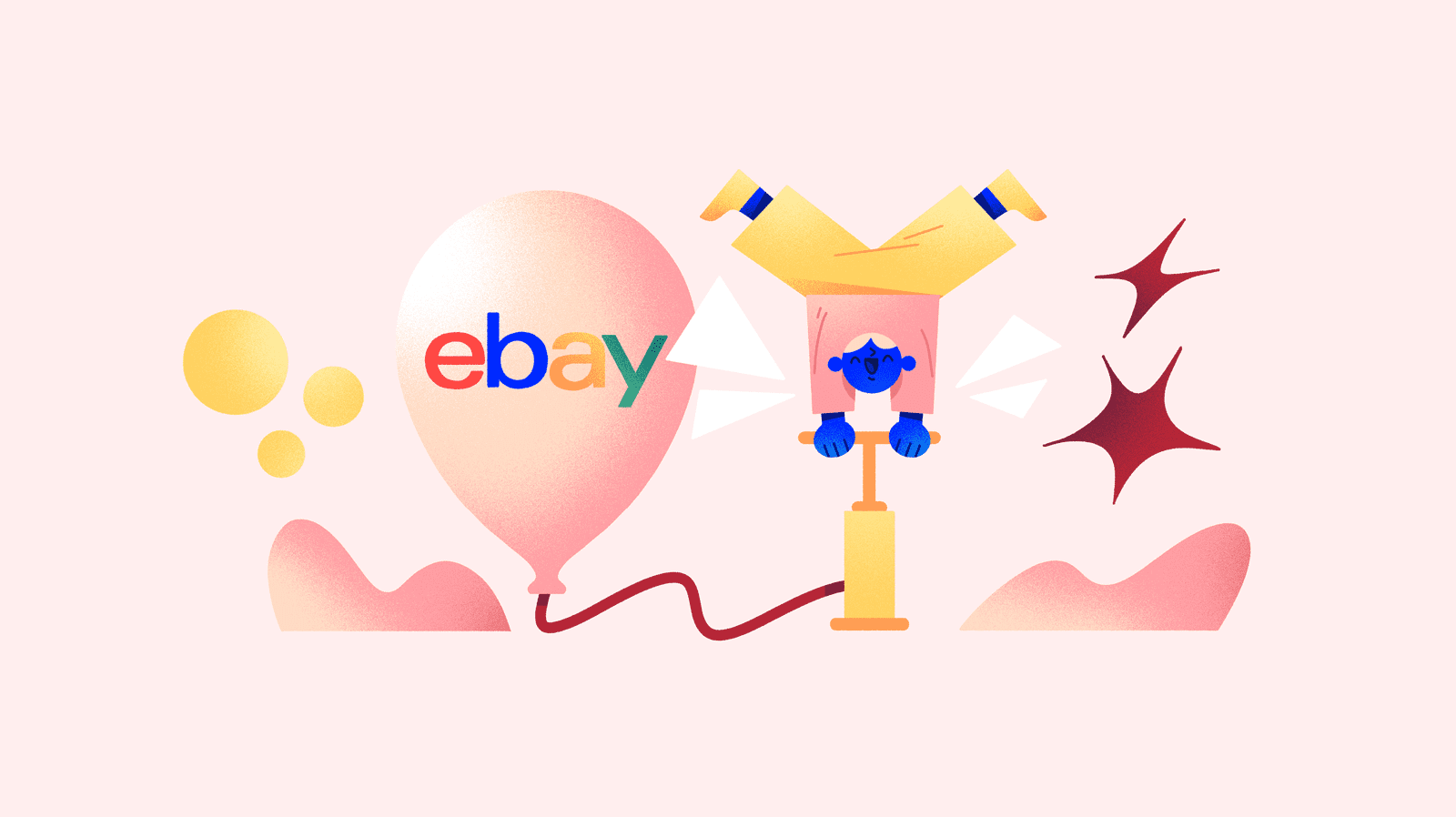
It’s no secret that selling on marketplaces is the most popular sales and marketing strategy at present for both brands and companies.
What is a little more difficult to discern is deciding what marketplaces are the best for you and if it’s really worth it to launch products on them. As eBay is one of the most well-known marketplaces amongst consumers, we’re going to tell you all the intricacies of how eBay works for selling.
How to sell on eBay
Ebay is an online marketplace open to the sale of products by any retail business or proprietary brand. Adding products to this marketplace is known as creating a “listing,” and listings are normally active for a certain period of time instead of being online for an indefinite amount of time like on other marketplaces.
Amongst the multiple advantages of selling on eBay, this marketplace offers you:
- 24/7 support
- International sales from a single account
- No registration fees
- Complementary promotional tools
- Temporary promotions with no commissions on sales
→ eBay or Amazon? Discover the marketplace that’s best for you
How to register as a seller on eBay
You can choose between creating a personal account if you’re going to sell few items or a business account with a store if you’re going to offer a broader catalog.
The costs vary from $7.95 monthly to $2,999.95 per year, depending on wether you choose a Starter, Basic, Premium, Anchor, or Enterprise subscription plan.
You’ll have to provide data like the name and type of company, address, and phone number.
Once you have your account, starting to add products to the marketplace is quite simple:
1. Choose “Sell your Item.”
2. Create a listing for the product, adding its category and selecting how long you want the listing to be for.
3. Set up a form of payment for the commissions and fees that eBay will charge you for each sale made on the marketplace. You can also choose how you want to receive payment from customers on eBay – bank cards or PayPal.
4. Choose the shipping method. One option is for eBay to handle shipment, with a corresponding fee scale in cooperation with some shipping services.
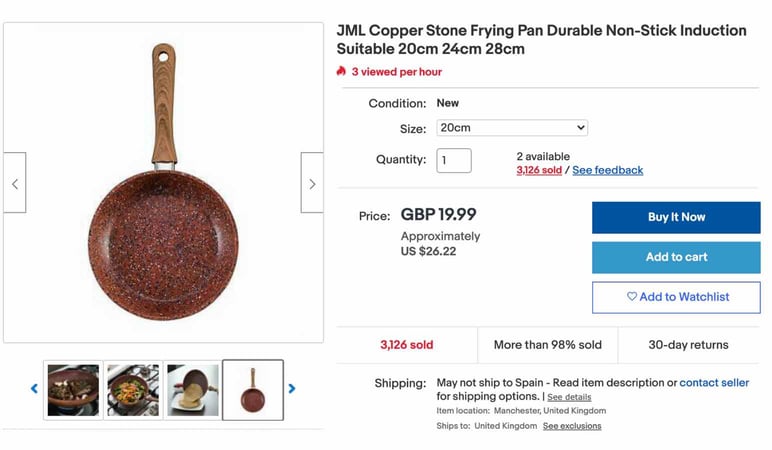
You can also choose eBay’s free tool: the Selling Manager. This tool will give you access to:
- The creation of several listings in mass.
- Classification of listings on eBay by section.
- Post-sale block task scheduling – things like sending correspondence to the buyer or printing shipping labels.
- Listing history and sales activity.
You can improve the tool by purchasing a subscription to Selling Manager Pro for $15.99 per month. This includes inventory supervision, report generation, listing scheduling, and access to listing templates that can be saved.
If you need support when registering your shop on eBay, they have a telephone support service to guide you step by step.
→ For the sake of comparison: The best online marketplaces to sell products on
Types of sellers on eBay
Apart from private and professional sellers, eBay groups sellers into three categories:
- Top Rated: these are the highest-level sellers. They have no negative reviews, complaints, or problems with sales and shipments. They get a lot of advantages: a seal of recognition on their pages, better listing positioning, and a 20% discount on sales commissions.
- Above Standard: sellers who have an average of positive experiences with their clients.
- Below Standard: sellers who have more problems with their sales, shipments, and returns than normal.
There's also a complex Feedback stars rating system depending on the number of ratings a seller has.
Selling fees on eBay
On eBay, two types of commissions are charged to sellers:
Fee per product listing publication
Each listing has a cost of $0.30 - $0.10 fee, depending on your type of seller subscription (it's more expensive for starter and basic levels). There's also a $20 insertion fee for some categories (heavy equipment, printing presses, trucks, trailers and carts).
Enriching your product listings also has an extra cost, although it is the only way to make them more complete and stand out. Here are some examples:
- Adding a subtitle: a sentence that explains the product a little more costs between $1.50 and $6 if it is activated for a month.
- Showing up in two categories: This multiplies the visibility of your product on the marketplace, but it means the fee for publishing your listing doubles.
- Gallery plus: this costs between $1 and $2.
- Scheduling a listing: when you publish a product, it appears immediately. If you want to program it for later, the additional fee is $0.10.
Remember that these fees for improving listings are charged whether you sell the product or not.
→ If you want to sell in Europe: The best marketplaces of the continent
Commission per sale made
When you sell something on eBay, you are charged between 2% and 12% of the sale price, depending on the type of product. Nevertheless, the marketplace limits that amount so that you will never spend more than $750 on commissions per transaction.
What’s more, if a customer returns your product, eBay will return your commission as long as you mark the sale as cancelled.

How to increase sales on eBay: tips and tricks
Enriched product content
As in all marketplaces, to increase sales on eBay the key is for your product content to be of quality and to stand out amongst the listings.
If your product information meets all the requirements, your products will be more likely to appear at the top of the search results and corresponding lists.
Remember that the most effective and fastest way to keep your product contents up to date and complete is by integrating a PIM (Product Information Management) solution to keep your catalog current in real time and over all the channels and marketplaces you choose, like eBay.
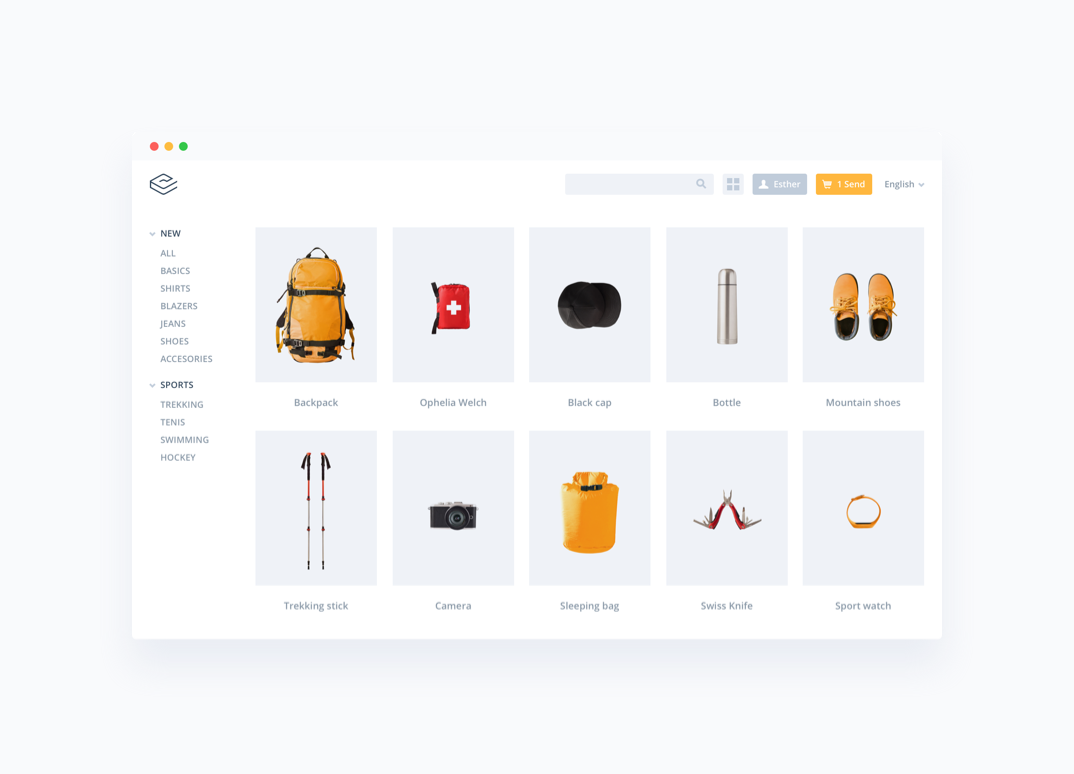
Descriptions and keywords
Make your texts stand out from the competition by offering original descriptions that are both detailed and useful to the user. The more users know about your product, the more likely they are to buy it.
Product titles should be short on eBay, so be sure to include basic keywords and descriptions.
→ Check these out: 10 tips for selling on marketplaces successfully
Images with a good resolution
Online buyers guide themselves by sight more than anything else. Attach as many pictures as possible to your product pages on eBay, from different angles and close-up shots. Avoid using generic images from manufacturers or copied from other websites.
You can add up to 12 product photos on eBay for free. They should be between 1600 and 500 pixels in size and have a plain background without text, logotypes, or illustrations.
Full technical data
Apart from a general idea about the product, the more technical data you give to the buyer, the more confidence he or she will have in you as a seller and you will also get fewer returns.
Include all the information that people have most questions about, and always make sure the information is accurate (for that, a PIM solution will do automatic product information quality checks): dimensions, colors, weight, varieties, available stock, etc.
Reviews
The more reviews a product has, the more prestige it will get in lists and the more users it will attract. Of course, they have to be positive reviews; thus, try to offer an excellent buying and shipping experience and invite your customers to leave reviews and ratings in the marketplace.
→ Go and get those five stars: How to get more reviews from your customers
Promoted listings
To generate revenue, eBay gives sellers the chance to highlight their products. According to eBay, this option makes product exposure in the marketplace increase by up to 30%.
eBay’s promoted listings work like online ads, and you are charged a sales percent depending on the number of clicks that your promoted product receives.
At the moment, this promotional option is limited to top-rated eBay sellers who meet a series of more demanding requirements.
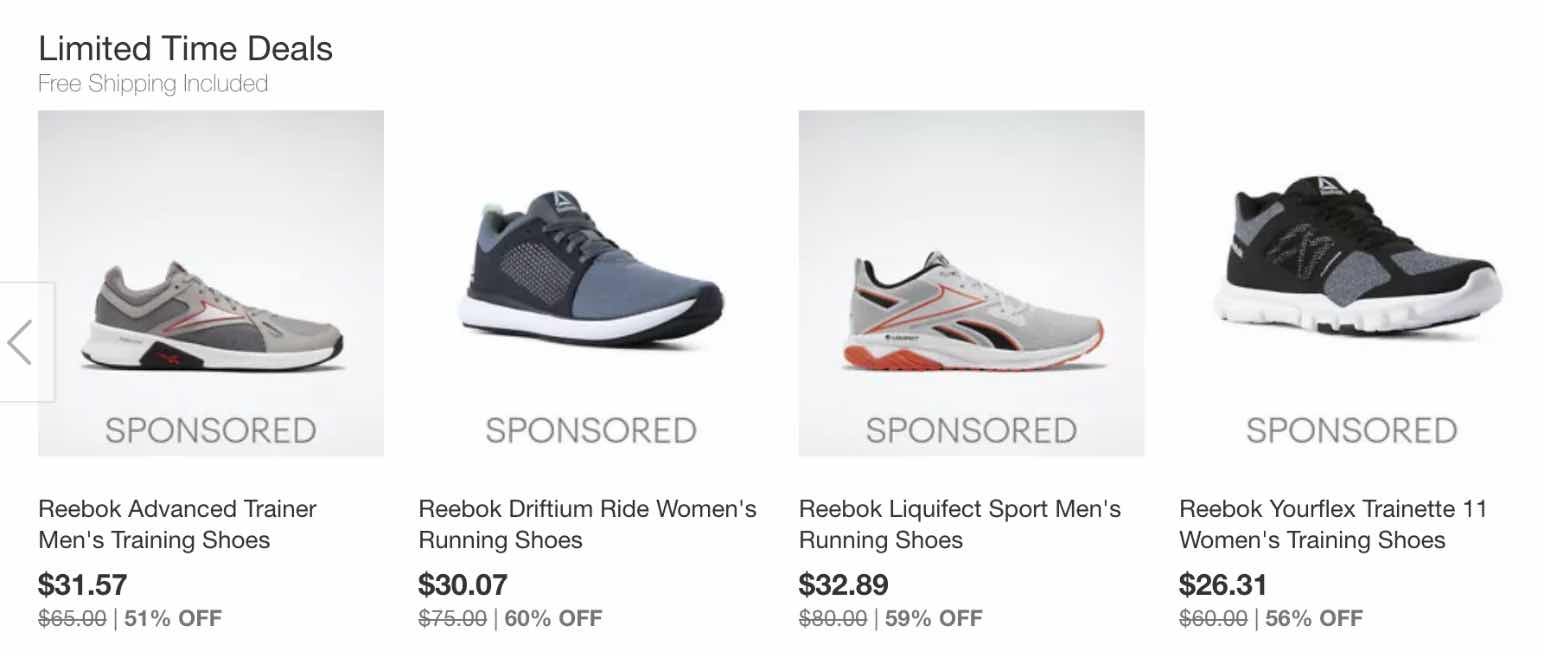
Special product prices
One way to make your products stand out on eBay is by putting them into the daily and weekly promotions organized by the marketplace. In this way, products on offer will be shown before the rest.
Nevertheless, you’ll have to apply between a 20% and 90% discount to your items. Thus, you have to think about whether or not this strategy will pay off for you. And, just like promoted listings, only sellers who get a direct invitation from the marketplace can take advantage of this initiative – normally these are retailers with a very good track record on eBay.
→ Just in case you aren’t sure: Pros and cons of selling on marketplaces
Fast shipments
Receiving a product quickly is something essential to ecommerce. More and more buyers want to have their shipments in record time, and that’s why eBay includes expedited shipping as an option for sellers.
Just like on Amazon, buyers can filter their searches for products that offer expedited shipping, guaranteeing that the product will be received the same day or within one day. Therefore, if your products are part of this option, they will be more likely to appear on results pages.
Going the extra mile: free shipping
Another label for products being sold on eBay is the fast and free option, which offers buyers free shipping.
Shipping costs are one of the greatest deterrents in online shopping; therefore, offering free shipping will be attractive to many users and will guarantee that you appear in searches that have been filtered with the “free” label.
This is only available for stores, not for individual sellers.
→ Always on time: How to choose your courier service for ecommerce
More flexible returns
eBay buyers can return their products in 14 to 30 days, but you can extend that timeframe up to 60 days to convince more demanding buyers.
Having said that, this could bring about higher logistics costs and less predictable income over the short term; thus, you should study this option to see if it’s worth it.
Conclusion
You now know how fast and easy selling on eBay is. Their commissions system is streamlined and predictable, although creating listings takes time, as does keeping up with the quality of product contents in order to be well positioned amongst the most sold items on eBay.
With the help of a PIM solution, you can choose the products you want to sell on eBay and have your information up to date at all times. Try our PIM software for free for 30 days and if you need help to connect your product catalog to eBay, we’ll take care of you personally.


